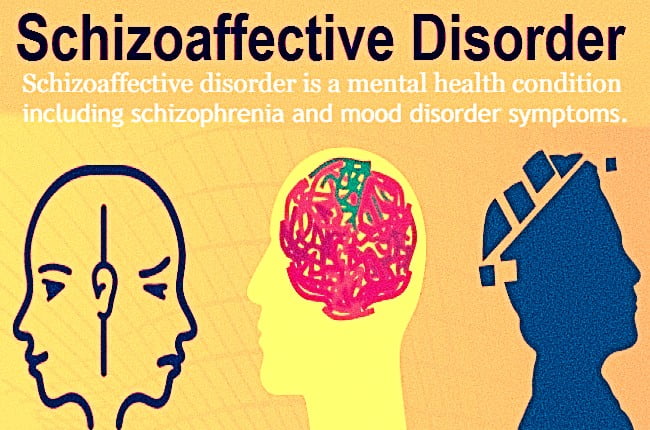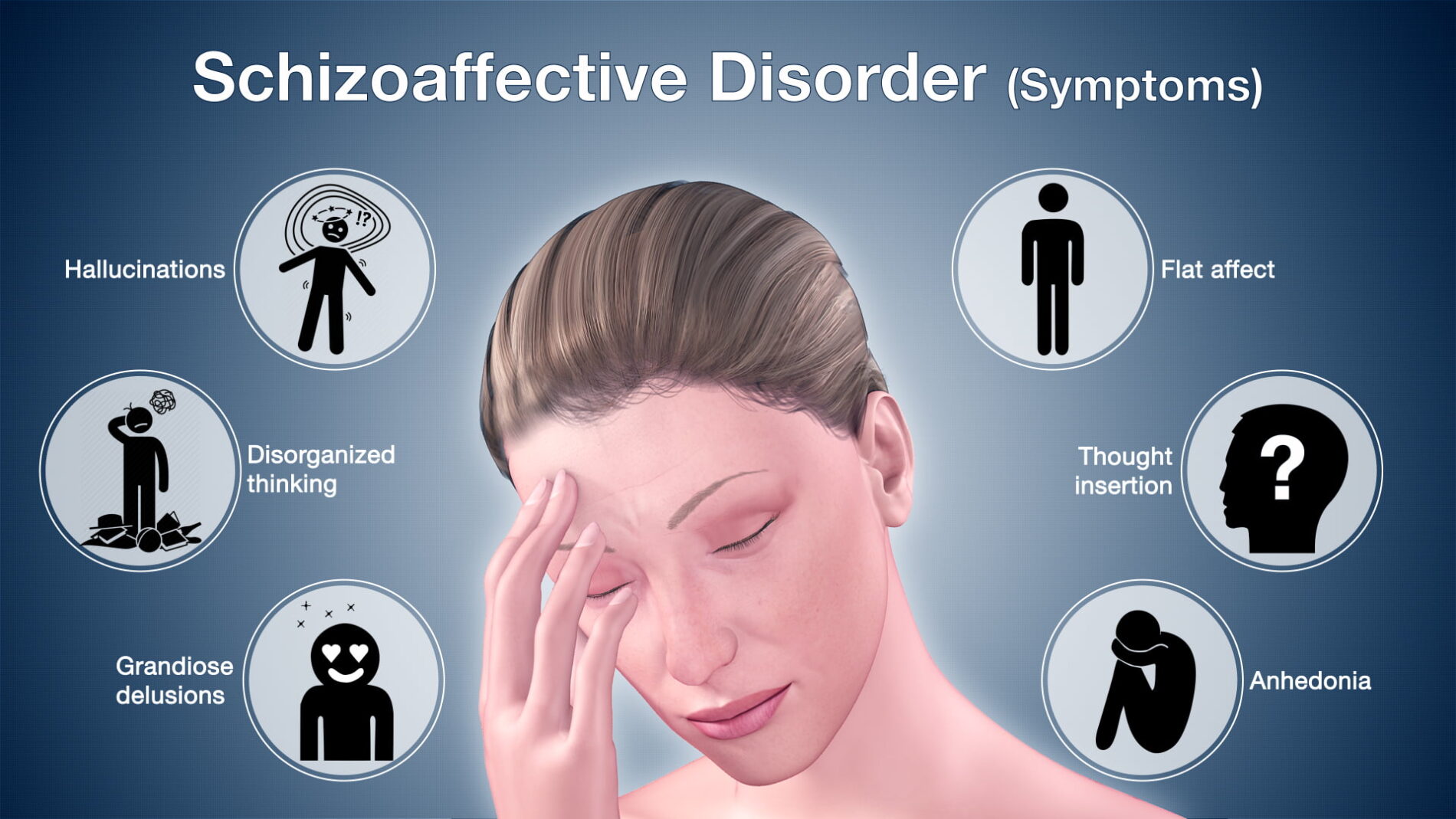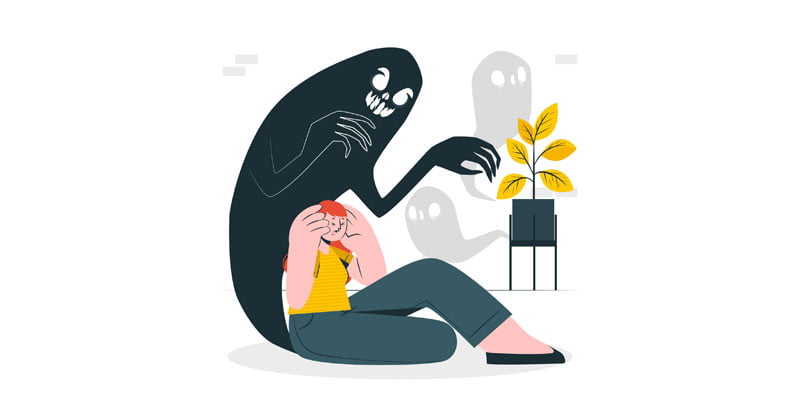Schizoaffective disorder is a mood disorder that includes symptoms of schizophrenia and mood disorders. I have a mental illness because I have manic or depressive episodes, as well as schizophrenic-like psychotic episodes. This can be hard to diagnose because it falls into two different categories. It can be difficult if you don’t know what to look for. But there are many signs and symptoms if you think someone has this type of mental illness.
Contents
What is Schizoaffective Disorder?

Schizoaffective Disorder is a mental disorder that combines symptoms of schizophrenia and mood disorders. Because it straddles two categories, its diagnosis can be difficult because it’s impossible to tell what kind of therapy this individual requires. But there are many symptoms to look for if you think someone has this mental illness.
It is not easy to know if someone has schizoaffective disorder. They are often misdiagnosed with bipolar disorder or schizophrenia. Because people with schizoaffective disorder are less studied, many treatments for them are borrowed from the other two conditions.
Schizophrenia is a serious mental disorder characterized by severe changes in thinking, emotion, and behavior. Schizoaffective disorder has a 0.3 percent chance of occurring in its lifetime. Males and females are equally vulnerable to schizoaffective illness, but males are more susceptible than women at an earlier stage.
Symptoms

The symptoms of schizophrenia are defined as a type of mood disorder characterized by two or more distinct, interrelated, and recurring psychotic manifestations (e.g., hearing voices) that cause significant distress or impairment in social, occupational, or other important areas of functioning (DSM-5). People who have depression or bipolar disorder may experience various symptoms:
- Hallucinations are seeing or hearing things that aren’t there.
- False beliefs about the world that are not true.
- Disorganized thinking is when someone starts talking about one thing, but then they start talking about something else. This can be confusing.
- If a person has been diagnosed with schizoaffective disorder, they will experience feelings of euphoria, racing thoughts, and increased risky behavior.
Causes of Schizoaffective Disorder
There is no single cause of the schizoaffective disorder. But research has shown that a combination of genetic and environmental factors may be responsible for causing the condition.
- Genetics: Schizoaffective disorder tends to run in families, so genes likely play a role in causing the condition.
- Environmental factors: Studies suggest that stressful life events may trigger the schizoaffective disorder in some people. For example, if someone has a family member who is diagnosed with schizophrenia, they may be more likely to develop Schizoaffective Disorder.
- Brain chemistry and structure: People with schizoaffective disorder have a part of their brain that does not work. That is why they feel bad and do strange things. This may be because of bad connections between nerves or chemicals.
- Stress: Some research suggests that stress may trigger schizoaffective disorder in those who are genetically predisposed to developing it.
- Drug Abuse: There is a strong link between drug abuse and schizoaffective disorder. People who abuse drugs are more likely to develop the condition, and people with schizoaffective disorder are more likely to abuse drugs.
Diagnosis of Schizoaffective Disorder

A diagnosis of schizoaffective disorder happens when a doctor asks you questions and you answer. Then they use numbers to figure out if you have the disease.
Symptoms of Schizoaffective disorder: Hallucinations, False beliefs about the world that are not true. Disorganized thinking is when someone starts talking about one thing and then they start talking about another. This can be confusing. The person may feel euphoria or increased risky behavior because of these symptoms.
Treatment
Schizoaffective disorder is a mental illness that needs treatment for symptoms to stop or be less severe. It also helps prevent future episodes of psychosis. People with the schizoaffective disorder need to take medication. They may also need talk therapy, support groups, vocational training, education, and social rehabilitation.
Medications
People with schizoaffective disorder can take medicine that will help stop the bad thoughts. Some people with schizoaffective disorder may need more medicine to treat their mood changes or other psychiatric conditions like anxiety or depression.
Psychotherapy
People with schizoaffective disorder get better when they take medication and also get supportive counseling. Supportive counseling can help people who are having a hard time. Counselors will listen and give advice. They talk to people in groups or one-on-one. This type of counseling is for all patients with schizoaffective disorder, even when symptoms are in remission.
Self-help groups
Self-help groups are for people with mental health problems. They can help people by giving them the support that helps them with their feelings. They also practice social skills. This type of support can be helpful to people with a mental illness. They may feel that other people do not think they are good enough.
Vocational rehabilitation services
Vocational rehabilitation services are also an important component of treatment for this condition. Research shows that vocational counseling and training can help people with schizophrenia or schizoaffective disorder to get a job.
Education about the condition
Informational support involves giving people the education they need to make an informed decision about what treatment plan is best for them. Doctors teach patients how to recognize when psychiatric symptoms are flaring up. This can help people get help before they have a psychotic episode. It is necessary for people with the schizoaffective disorder to learn about the course and prognosis of their condition. They should also know what may put them at risk for this condition.
Social rehabilitation (social skills training)
People with schizophrenia can also benefit from social rehabilitation services such as those offered by social workers and other community support programs. These types of services involve teaching practical living skills to help people with schizophrenia function better in their community. This may include helping them learn how to:
- Set realistic goals and expectations for themselves
- Handle money and financial responsibilities
- Make and keep friends
- Find and keep a job
- Stay safe in social situations
Helping Yourself

Things that may help people with the schizoaffective disorder include:
- Having a strong support system
- Keeping busy doing things you enjoy
- Getting treatment for any problems like anxiety or depression
- Taking medicine as prescribed by your doctor
- Being aware of the warning signs and symptoms of psychosis, mania, and depression.
Following a healthy lifestyle may also help manage symptoms of the condition and improve well-being for people with schizoaffective disorder, including:
- Eating nutritious meals
- Exercising regularly to maintain good physical health
- Getting enough sleep or rest each night (at least seven hours)
- Avoiding drugs and alcohol which can make symptoms worse
- Maintaining healthy relationships with friends or family who understand your condition.
These are important things that people should do if they have schizoaffective disorder. People need to keep their minds busy by doing fun activities like reading, working on hobbies, playing games, etc., so their minds do not wander to the symptoms of schizophrenia.
Helping A Family Member Or Friend

If you have a family member or friend with schizoaffective disorder, there are some things that you can do to help them:
- Learn as much as you can about the condition
- Be supportive and understanding
- Encourage them to seek treatment, including medication and counseling if necessary
- Help them maintain a healthy lifestyle by encouraging healthy eating and exercise
- Remind them to take their medication as prescribed. If they are not taking it, talk with the doctor
- Encourage regular sleep habits (at least seven hours per night)
- Offer emotional support by listening carefully when your loved one is speaking without judgment or blame. Be patient if your family member takes longer to express themselves than others.
- Avoid discussing their condition in public or around people who may not be understanding
- Do not take on the role of caregiver if you are unable to do so without feeling overwhelmed – this is very important! Seek professional help if needed.
- It can be difficult to live with someone who has the disorder, but it is possible. It may take a lot of patience and understanding from both the person with schizoaffective disorder and their support system to make this work.
Conclusion
Schizoaffective disorder is when someone has symptoms of both schizophrenia and depression. People who have the the disorder may experience delusions, hallucinations, or other psychotic phenomena that are mixed with mood swings which give them an elevated sense of happiness or energy. They also often have trouble concentrating on tasks for long periods due to their racing thoughts. If you think that you might have this serious illness, it is important to go see your doctor. They will create a plan for what you need to do.
If you are looking for affordable Online Counseling MantraCare can help: Book a trial therapy session


